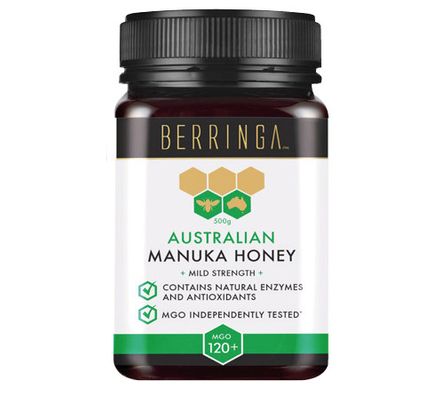Berringa Super Manuka Honey
Berringa Manuka Honey MGO120
Also found in: MGO Manuka Honey
Manuka Honey MGO 120+ is a table grade manuka honey suitable for everyday wellness. Antibacterial 'SUPER MANUKA' honey from the Leptospermum polygalifolium bush, a plant unique to Australia. n Wound Management Association (AWMA). Read more
Product Description
Berringa Manuka Honey MGO120
Berringa's 100% Australian Manuka Honey MGO120+ is a mild strength bioactive honey suitable for every day use.
It contains natural enzymes and antioxidants and is perfect as an additive for foods and drinks, or it can be taken by itself.
Like all Berringa's antibacterial Manuka Honey, each batch is tested by independent NATA accredited laboratories, so you can be sure when it says MGO120+ the methylglyoxal level is at least that.
Antibacterial 'SUPER MANUKA' honey from the Leptospermum polygalifolium bush, a plant unique to Australia. Antimicrobial properties proven through independent research to inhibit growth of staphylococcus aureus and e-coli.
- Berringa Super Manuka Honey contains antioxidants and is fat free, cholesterol free and sodium free.
- Rated according to Methyglyoxal activity.
Product Source and Production Methods
Leptospermum polygalifolium grows in a variety of coastal habitats along the north coast of New South Wales, and Southern Queensland in Australia.
The leptospermum polygalifolium bush commences flowering in early spring, and usually flowers throughout October. The bush flowers later than most heaths and tee trees, ensuring that the bees harvest nearly all their honey from this particular species.
The harvest usually starts around mid-November, when the honey is extracted from the hives. The honey is a jelly like substance, making extraction more difficult, but producing a high quality manuka honey with low moisture content.
Each batch of Berringa honey is independently tested for MGO levels in a certified internationally accredited NATA (National Association of Testing Authorities) laboratory.
Berringa are also members of the Complementary Healthcare Council of Australia (CHC) and the Australia









